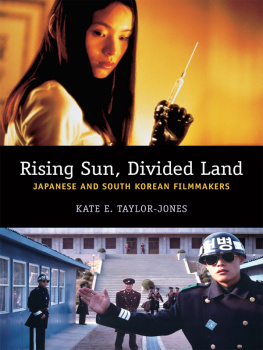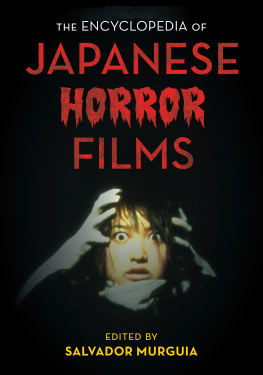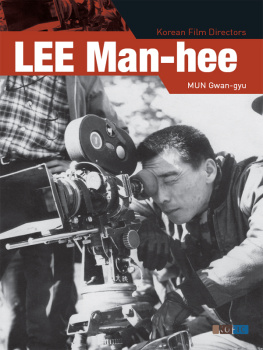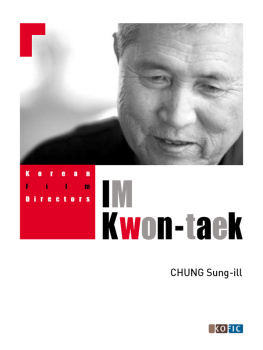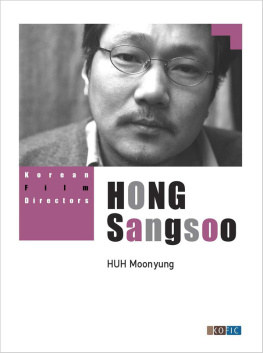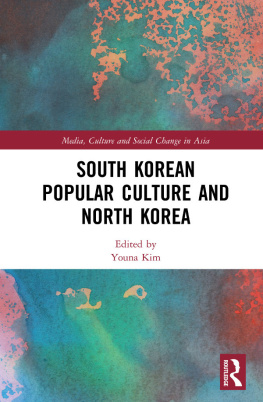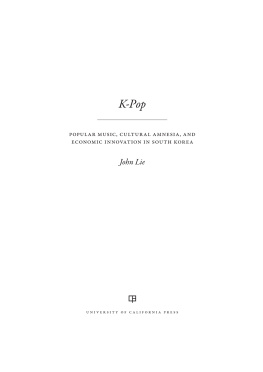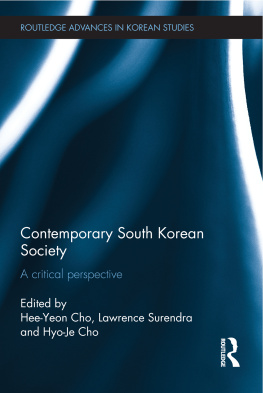Rising Sun, Divided Land
Rising Sun, Divided Land
JAPANESE AND SOUTH KOREAN FILMMAKERS
KATE E. TAYLOR-JONES

WALLFLOWER PRESS
LONDON & NEW YORK
A Wallflower Press Book
Published by
Columbia University Press
Publishers Since 1893
New York Chichester, West Sussex
cup.columbia.edu
Copyright Kate E. Taylor-Jones, 2013
All rights reserved.
E-ISBN 978-0-231-85044-5
Wallflower Press is a registered trademark of Columbia University Press
A complete CIP record is available from the Library of Congress
ISBN 978-0-231-16586-0 (cloth : alk. paper)
ISBN 978-0-231-16585-3 (pbk. : alk. paper)
ISBN 978-0-231-85044-5 (e-book)
Cover image:
Design by Elsa Mathern
A Columbia University Press E-book.
CUP would be pleased to hear about your reading experience with this e-book at .
Contents
Thanks must be extended to the British Academy and the Great British Sasakawa Foundation for their support with various aspects of this project.
Warmest appreciation is extended to my friends and colleagues from around the world who have helped me throughout this process. Key people who have played invaluable roles at various stages need a mention here: Di and Howard Gorindge, Hiro and Yuri Kiyama, Dee-arne Caire, Jun-rock Seo, Miki-chan, Alison Armstrong thank you all for your friendship, hospitality and advice over the years. A big thank you to all my current and former colleagues at Bangor University including Stephanie Marriott, Gwen Ellis, Eben Muse, Amy Chambers and Lyle Skains. As usual, my deepest thanks are given to all my family for all the care and support they have extended to me over many years. This has been a long process for a variety of reasons and I now have two key additions in my life who were not with me at the beginning! My loving and supportive husband Nick Taylor-Jones and our beloved daughter Amelia who joined us in late 2012 to both of you I send all my love.
Cultural traditions [] are preserved and continue to live not only in the individual subjective memory of a single individual and not in some kind of collective psyche but rather in the objective forms that culture itself assumes. (Bakhtin 1982: 249)
Rather than engaging with the myriad of reasons for this media interplay, a topic which several recent studies have begun to deal with (Lau 2003, Katzenstein and Shiraishi 2006, Davis and Yeh 2008, Hunt and Wing-Fai 2008), this book will concentrate on directors from two of the countries that have been key in this development: Japan and South Korea. This study will examine eight directors in total: Fukasaku Kinji, Im Kwon-taek, Kawase Naomi, Miike Takashi, Lee Changdong, Kitano Takeshi, Park Chan-wook and Kim Ki-duk. The aims are to present the works of these directors on multiple levels: as reflections of personal visions but also as works that are part of the ongoing debates concerning, respectively:
Colonialism, post-colonialism, multinational capitalism, globalisation, the complex and multifaceted interplay between the Asia Pacific and the Euro-American Pacific, and their diverse and intersecting productions. (Geok-lin Lim et al. 1999: 3)
The debates involved in the relationship between cinema and nation are complicated (see Hjort and Mackenzie 2000). Does cinema reflect the nation from which it emerges? Is French, Russian, Japanese cinema and so forth the way it is because of the countries that it emerges from? This premise would indicate that there is a defined, unique concept of nation and nationhood that continues to function as a marker in cultural production for the respective nations that it comes from. As David Morley and Kevin Robins state, the idea of the nation involve(s) people in a common sense of identity and work(s) as an inclusive symbol which provides integration and meaning (1995: 91). The cinema therefore provides the audiences of a specific nation their symbols of identity that accurately expresses, describes and itemises the salient concerns and features of a given national culture (Hjort and Mackenzie 2000: 4). National identity is consequently based on a common sense of unity with one particular social grouping. Nationhood therefore will function as the answer to a felt need for a rooted, bounded, whole and authentic identity (Morley and Robins 1995: 103).
There are several issues with this approach; least of all that of cultural determinism. Must the nation be defined by opposition to an other? Although questions of the national continue to play an important factor in film studies, cross-cultural, interdisciplinary practices that can be seen to work against the binary concept of them/us have been a growing field of study. These approaches have had particular effect on the discussion of cinema and media (Darrell William Davis refers to the process as film as syncretism [2001: 66]). Several recent studies have focused on East Asian cinema at the centre of the transnational and the global as a method to overcome the sometimes-limiting approach to seeing film as a method of legitimising an essentialist discourse of the national. These studies can be seen in engaging in the global consumption of Japanese Horror and Hong Kong action films (see McRoy 2005, Morris et al. 2006), the continuing Hollywood remaking of successful Asian films (Marchetti and Kam 2007), and the role that international film festivals are playing (Iordanova and Cheung 2011). Globalisation in all its forms, both negative and positive, has had an undoubted effect on film. With reference to Chinese cinema (but in an argument that can easily be transferred to other regions of East Asia), Sheldon Hsiao-Peng Lu identified an era of transnational post-modern cultural production (Lu 1997: 10). Hunt and Wing-Fais (2008) work on transitional East Asia cinema, Iwabuchis debates around the global consumption of Japanese television and popular culture (2003, 2004), the work of Chua et al. (2008) work on Korean Television, and Davis and Yehs (2008) examination of the East Asian media industries all highlight the fact that national cinemas, as traditionally defined, can no longer exist in isolation. Davis and Yeh note that the East Asian screen industry has characteristically negotiated the passing of studio modes to re-emerge as a flexible industrial-cultural force responding to challenges of global capitalism (2008: 3). This is not to deny the impact that an individual national history, culture, economy and traditions have on the cinema from this region. Cinema is in many ways an ideal tool to chart and evaluate a national culture but the point that needs to be made is that cinema does not act, and has never acted, in isolation from the world that surrounds it. There is always constant interplay between the nation and culture as concept and the realities that traverse it as part of wider dialogue of internationality and globalisation. As Davis and Yeh state:
A national cinema, then, is not a one-way reflection of culture, but neither is there only a dialectical, intertextual relation between cinemas and cultures. Instead national cinema is both of these, a reflection and a dialogue, plus the next stage of its evolution. (2001: 95)
In a similar fashion, the individual director is imbued with a notion of cultural and national identity but concurrently, the individual works with and against these discourses. In short, the director can be seen to simultaneously inform and be informed by their individual notions of identity as well as the cultural and national discourse that they work inside. Susan Hayward writing on auteur theory concluded that,

